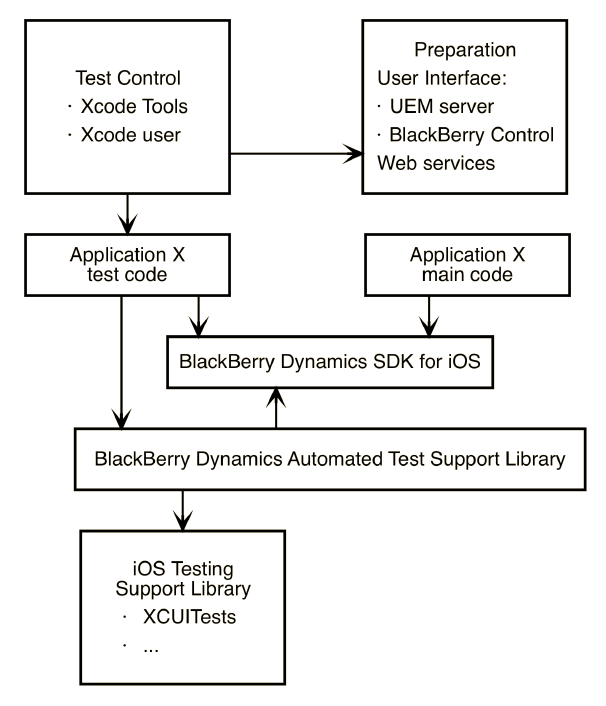- What is the BlackBerry Dynamics SDK?
- Requirements and support for platform-specific features
- Software requirements
- Using an entitlement ID and version to uniquely identify a BlackBerry Dynamics app
- FIPS compliance
- Declaring a URL type to support BlackBerry Dynamics features
- App UI restrictions
- Requirements and prerequisites for iOS platform features
- Supported TLS protocols and cipher suites
- Steps to get started with the BlackBerry Dynamics SDK
- Integrating optional features
- Preventing password autofill in the app UI
- Enforcing local compliance actions
- Adding custom policies for your app to the UEM management console
- Add a watermark to the screens in a BlackBerry Dynamics app
- Allow unencrypted data to be copied to the pasteboard
- Replace the default splash screen for inactive apps
- Prompt the user to update a BlackBerry Dynamics app
- Adding a custom logo and colors with the branding API
- Using zero sign-on for SaaS services through BlackBerry Enterprise Identity
- Integrating BlackBerry Enterprise Mobility Server services
- Enabling microphone and camera support with WebRTC
- Integrating BlackBerry Analytics
- Sample apps
- Testing and troubleshooting
- Deploying your BlackBerry Dynamics app
- Deploying certificates to BlackBerry Dynamics apps
- BlackBerry Docs
- BlackBerry Dynamics SDK for iOS 11.1
- BlackBerry Dynamics SDK for iOS Development Guide
- Testing and troubleshooting
- Implementing automated testing for BlackBerry Dynamics apps
- Components of a sample automated testing configuration
Components of a sample automated testing configuration
The following diagram illustrates the different components in a sample automated testing configuration:
